
1916-17 3c Washington, violet, imperforate, type I
# 483 - 1916-17 3c Washington, violet, imperforate, type I
MSRP:
Was:
Now:
$15.00 - $220.00
(You save
)
Write a Review

Write a Review

483 - 1916-17 3c Washington, violet, imperforate, type I
| Image | Condition | Price | Qty | |
|---|---|---|---|---|

|
Mint Plate Block
ⓘ
Usually ships within 30 days.
Usually ships within 30 days.
$ 220.00
|
$ 220.00 |
|
0
|
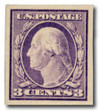
|
Mint Stamp(s)
ⓘ
Ships in 1-3 business days.
Ships in 1-3 business days.
$ 33.00
|
$ 33.00 |
|
1
|
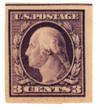
|
Mint Stamp(s)
Fine
ⓘ
Ships in 1-3 business days.
Ships in 1-3 business days.
$ 37.50
|
$ 37.50 |
|
2
|

|
Mint Stamp(s)
Fine, Never Hinged
ⓘ
Ships in 1-3 business days.
Ships in 1-3 business days.
$ 40.00
|
$ 40.00 |
|
3
|
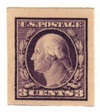
|
Mint Stamp(s)
Very Fine
ⓘ
Ships in 1-3 business days.
Ships in 1-3 business days.
$ 37.50
Save $ 2.50
|
$ 37.50 Save $ 2.50 |
|
4
|

|
Mint Center Line Block
ⓘ
Ships in 1-3 business days.
Ships in 1-3 business days.
$ 165.00
|
$ 165.00 |
|
5
|
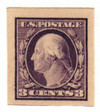
|
Mint Stamp(s)
Very Fine, Never Hinged
ⓘ
Ships in 1-3 business days.
Ships in 1-3 business days.
$ 45.00
|
$ 45.00 |
|
6
|
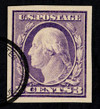
|
Used Single Stamp(s)
ⓘ
Ships in 1-3 business days.
Ships in 1-3 business days.
$ 27.50
|
$ 27.50 |
|
7
|

|
Mint Stamp(s)
Extra Fine, Never Hinged
ⓘ
Ships in 1-3 business days.
Ships in 1-3 business days.
$ 62.50
|
$ 62.50 |
|
8
|

|
Mint Vertical Line Pair
ⓘ
Usually ships within 30 days.
Usually ships within 30 days.
$ 79.00
|
$ 79.00 |
|
9
|

|
Unused Stamp(s)
small flaws
ⓘ
Ships in 1-3 business days.
Ships in 1-3 business days.
$ 22.50
|
$ 22.50 |
|
10
|

|
Used Stamp(s)
small flaws
ⓘ
Ships in 1-3 business days.
Ships in 1-3 business days.
Free with 4,500 Points
$ 15.00
|
$ 15.00 |
|
11
|
Mounts - Click Here
| Mount | Price | Qty |
|---|
U.S. #483
Series of 1916-17 3¢ Washington
Type I
Series of 1916-17 3¢ Washington
Type I
Issue Date: October 13, 1917
Printed by: Bureau of Engraving and Printing
Printing Method: Flat plate
Watermark: None
Perforation: None
Color: Violet
Printed by: Bureau of Engraving and Printing
Printing Method: Flat plate
Watermark: None
Perforation: None
Color: Violet

!




